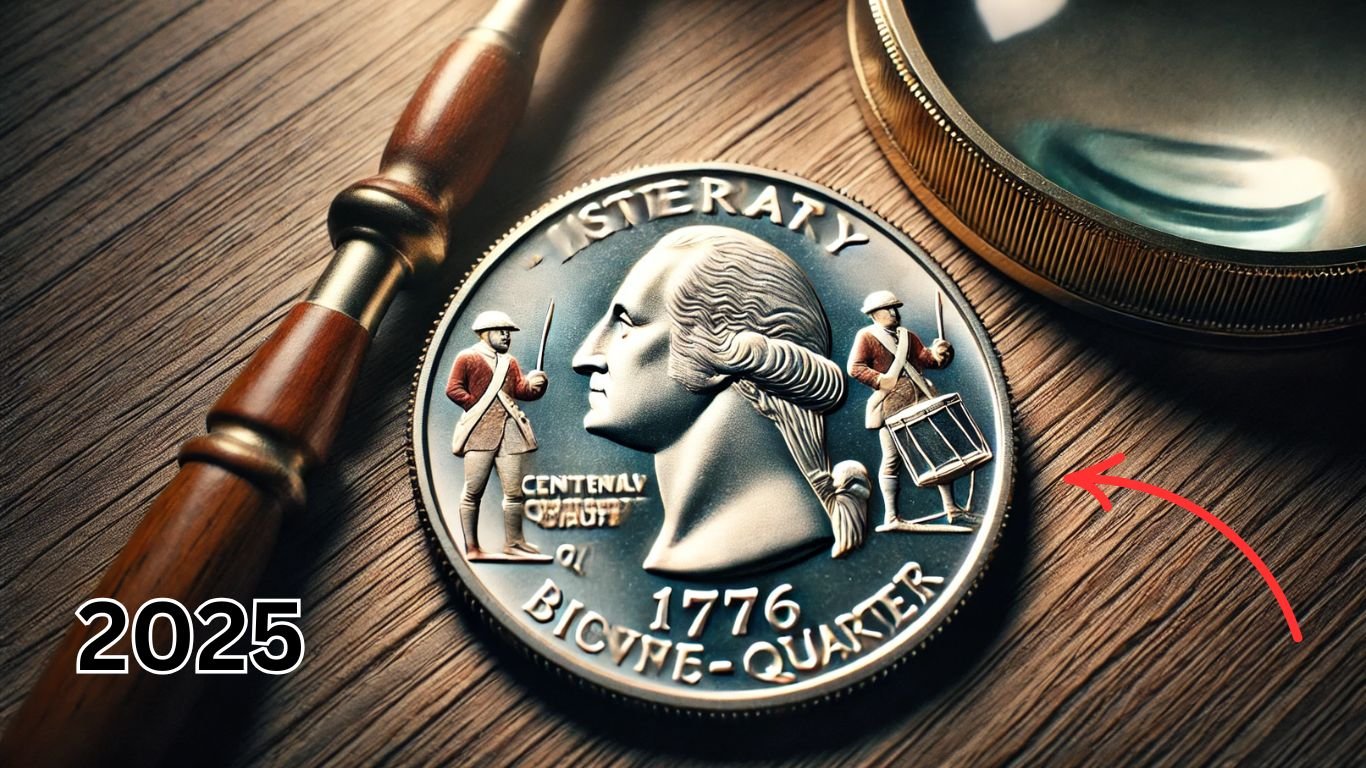Coins not only represent economic value but also carry historical significance, making them a coveted item among collectors and enthusiasts. The allure of rare U.S. coins, often considered treasures, lies in their historical narratives and artistic merit. In this discussion, we delve into some of America’s most iconic coins that have achieved legendary status over the years.
Bicentennial Quarter Overview
Introduced to celebrate the 200th anniversary of the United States, the Bicentennial Quarter features a dual date of “1776-1976” and a distinctive design showcasing a colonial drummer. While millions were produced, the 90% silver versions are exceptionally rare, with a potential value up to $15 million. The Bicentennial Quarter not only highlights a significant national celebration but also stands as a symbol of American resilience and patriotism.
Key Takeaway: The rare silver version of the Bicentennial Quarter underscores the blend of historical celebration and significant monetary value.
The First U.S. Dollar
The Flowing Hair Dollar, minted in 1794, holds the title of America’s first dollar coin. This coin is a cornerstone in U.S. numismatics due to its symbolic designs and the high auction values it commands, occasionally reaching upwards of $10 million. Its obverse depicting Lady Liberty and the reverse featuring an eagle highlight the young nation’s ideals and soaring ambitions.
Key Takeaway: As America’s inaugural dollar, this coin encapsulates the fledgling nation’s aspirations and economic beginnings.
Saint-Gaudens’ Artistic Triumph
The 1933 Saint-Gaudens Double Eagle, often hailed as the pinnacle of U.S. coin design, showcases an elegant depiction of Lady Liberty. The coin’s artistry and the fact that it was never circulated make it extremely rare, with values exceeding $20 million. Its creation during the Great Depression and subsequent recall makes it a poignant reminder of America’s economic challenges and recovery.
Key Takeaway: This coin merges exceptional artistry with historical context, embodying a critical period in American history.
The Brasher Doubloon
Dating back to 1787, the Brasher Doubloon was crafted by Ephraim Brasher, a notable New York silversmith. This gold coin, valued around $20 million, features a distinctive sun-and-eagle motif, symbolizing New York’s early entrepreneurial spirit. The Brasher Doubloon is celebrated for its rarity and as a prelude to the official U.S. Mint’s productions.
Key Takeaway: The Brasher Doubloon offers a unique glimpse into pre-mint American numismatics and the personal craftsmanship of its era.
Mystery of the Liberty Head Nickel
The 1913 Liberty Head Nickel is shrouded in mystery, primarily because it was minted without official authorization. With only five known specimens, each valued over $20 million, it captivates collectors with its enigmatic origins and extreme scarcity.
Key Takeaway: The Liberty Head Nickel stands as a numismatic legend, representing one of the greatest mysteries in U.S. coin history.
The Barber Dime’s Rarity
The 1894-S Barber Dime, with fewer than a dozen examples known to exist, is a significant rarity. Valued at over $20 million, this coin is a testament to the enigmatic decisions within the U.S. Mint regarding its limited production. Collectors prize the Barber Dime for its scarcity and the lore surrounding its origin.
Key Takeaway: The 1894-S Barber Dime encapsulates the intrigue and rarity that can drive a coin’s desirability to spectacular heights.
The King of American Coins
The 1804 Silver Dollar, known as the “King of American Coins,” is famed not for its minting date but for its unique historical role as a diplomatic gift during the 1830s. With its valuation often exceeding $20 million, this coin is a symbol of America’s early international relations and its burgeoning status on the world stage.
Key Takeaway: The 1804 Silver Dollar’s rarity and backstory enhance its status as one of the most prestigious coins in the numismatic community.
The 1822 Half Eagle
As one of the rarest coins in the United States, the 1822 Half Eagle is a $5 gold coin with only three specimens known. Its astounding $20 million value reflects not only its rarity but also its representation of early 19th-century U.S. minting practices.
Key Takeaway: The 1822 Half Eagle is revered both for its scarcity and its role in illustrating the evolution of U.S. coinage.
Conclusion
Collecting rare coins is more than a hobby; it’s a journey through history. Each coin tells a story of a particular time, reflecting the artistic, economic, and cultural values of its era. For collectors, these coins are not merely metal and motifs; they are historical artifacts that offer a tangible connection to America’s rich past.
Rare U.S. coins such as the 1794 Flowing Hair Dollar and the 1933 Saint-Gaudens Double Eagle are not just valuable collectibles; they are embodiments of America’s historical and cultural milestones. Their stories of creation, circulation, and eventual legendary status highlight their intrinsic and enduring appeal.

